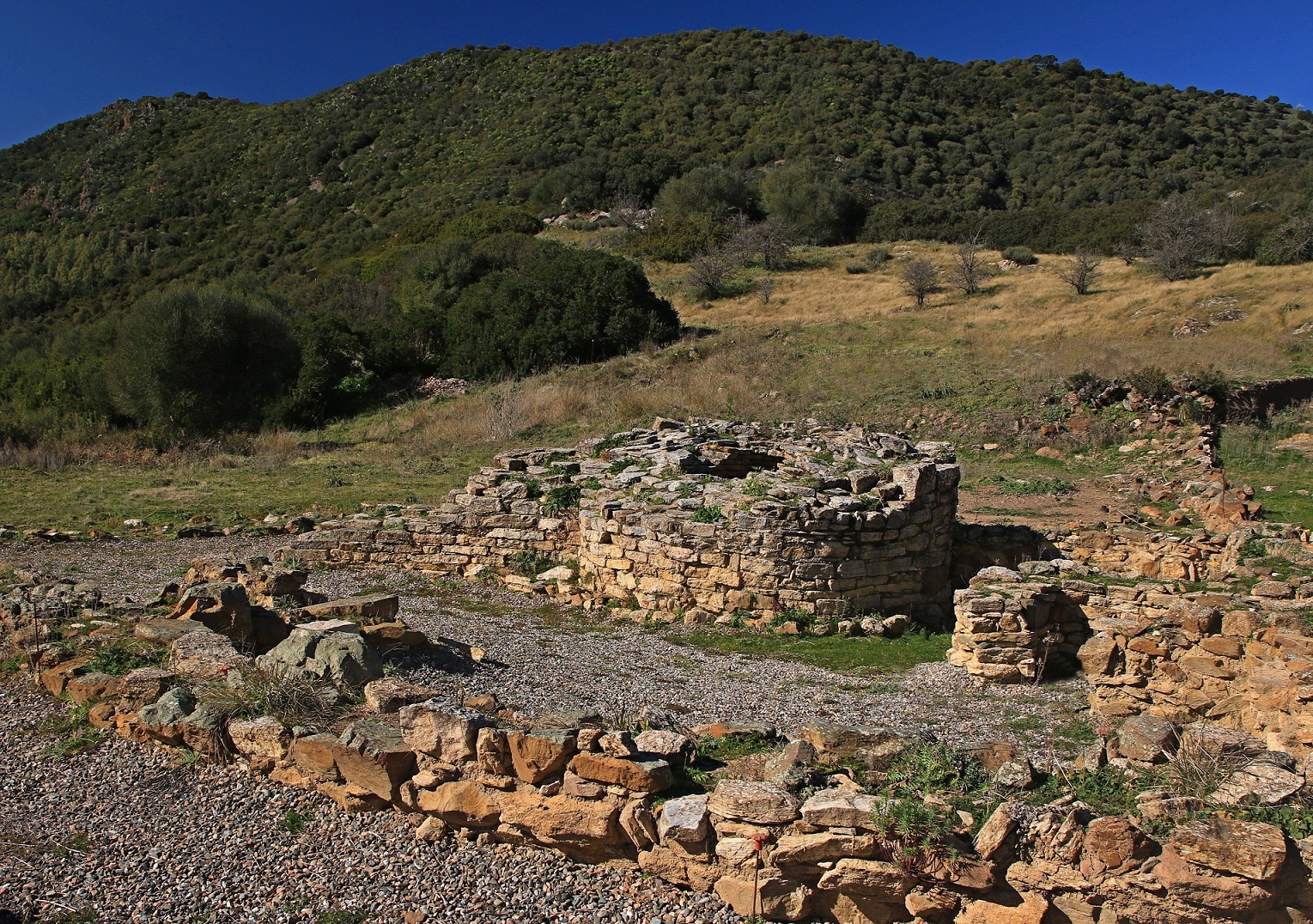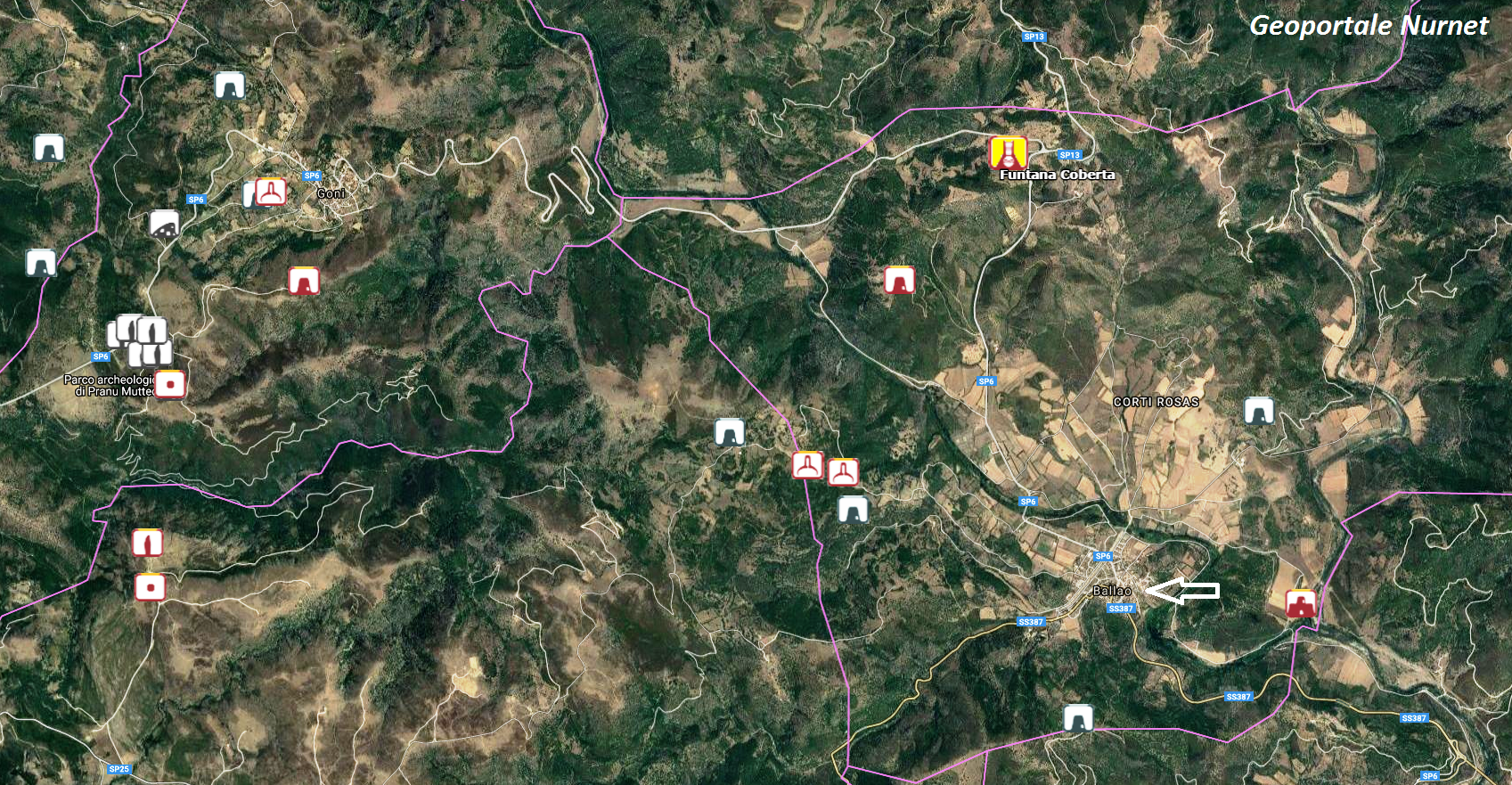“The small temple or sacred fountain of ‘Funtana Coperta’ does not stand in the plain, but about fourteen kilometers from Ballao, in a lonely wooded hollow, at the head of a small valley, merging with that of the Flumendosa, etched here and there by galleries, wells, and trenches of mines, along which runs the road leading to the alpine village of Escalaplano, a solitary place, like other places of worship of ancient Sardinia, where the solemn majesty of the landscape, enclosed between high mountains, rendered the rite around an abundant, pure, and healing spring, which gushed from the rocky, arid, and thirsty land, even more mysterious and imposing.”…”Perhaps the lonely valley of Fontana Coperta witnessed the gatherings of the people of these lands preparing for their threatening incursions feared by the rich lands of the inhabited plain of the Patulcensi Campani, and the warlike endeavors, which disturbed the tranquility of provincial life, were in the minds of the rebellious Galilensi nothing but an attempt to regain control, freedom, and lands of their ancient ownership, taken from them by colonists imported from Rome, and were supported, animated, and comforted by the powerful spirit, inciting the deity. And perhaps this is why the action of the victorious and dominating Roman was directed generally against the temple, dispersing its worship and its traces, silencing that religious center, while leaving the beautiful fountain, very useful and indeed indispensable throughout the region, and in the adjacent flat and sunny valley of Flumendosa…” (Antonio Taramelli: “Sardegna Archeologica reprints: Scavi e Scoperte 1918-1921”. Series edited by Alberto Moravetti and published by Carlo Delfino in 1984). The black and white photos and drawings by Prof. Giarrizzo are taken from the same publication. The photos of the well temple of Funtana Coberta are by Gianni Sirigu, Andrea Mura-Nuragando Sardegna, Bibi Pinna, Giovanni Sotgiu, and Diversamente Sardi.












